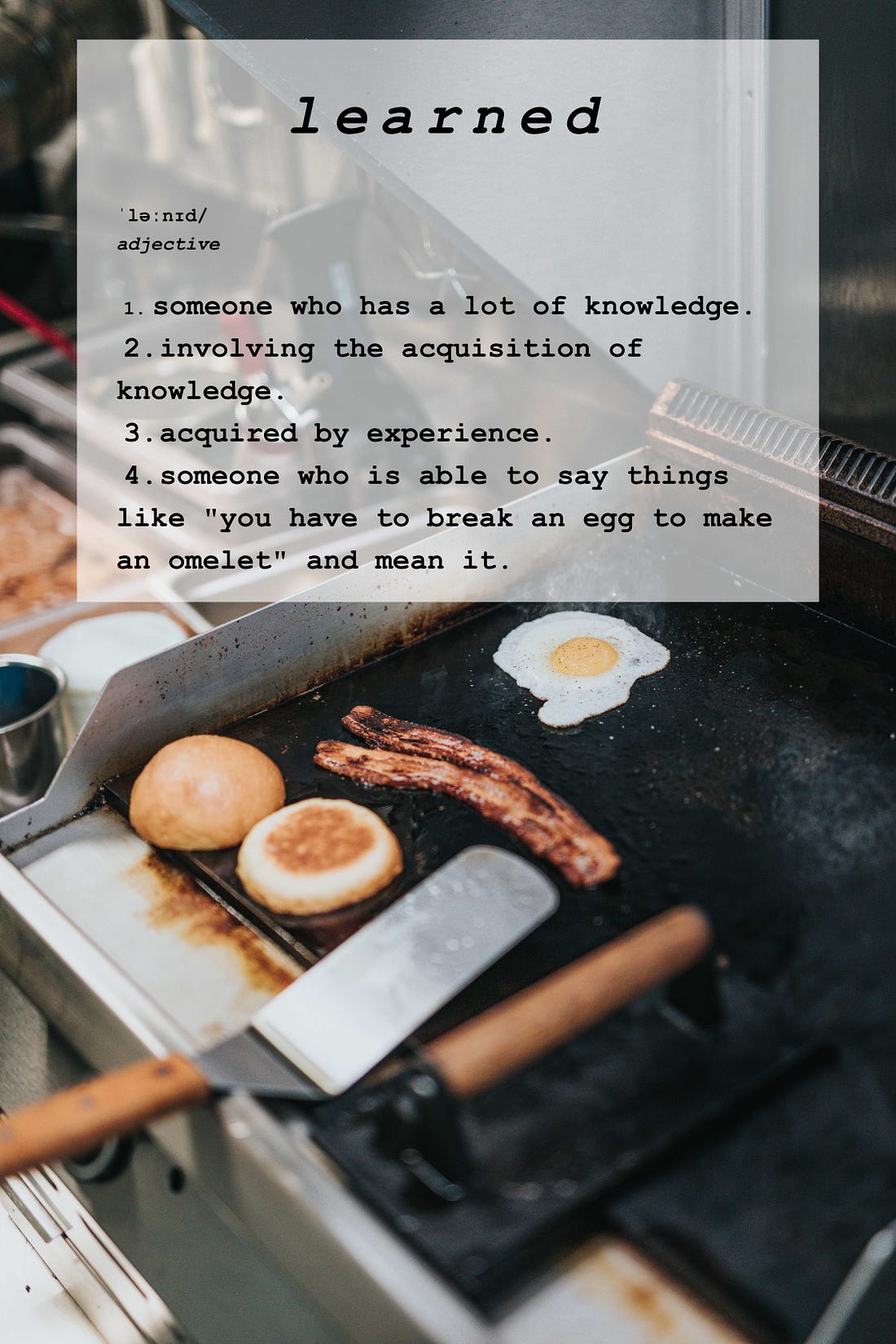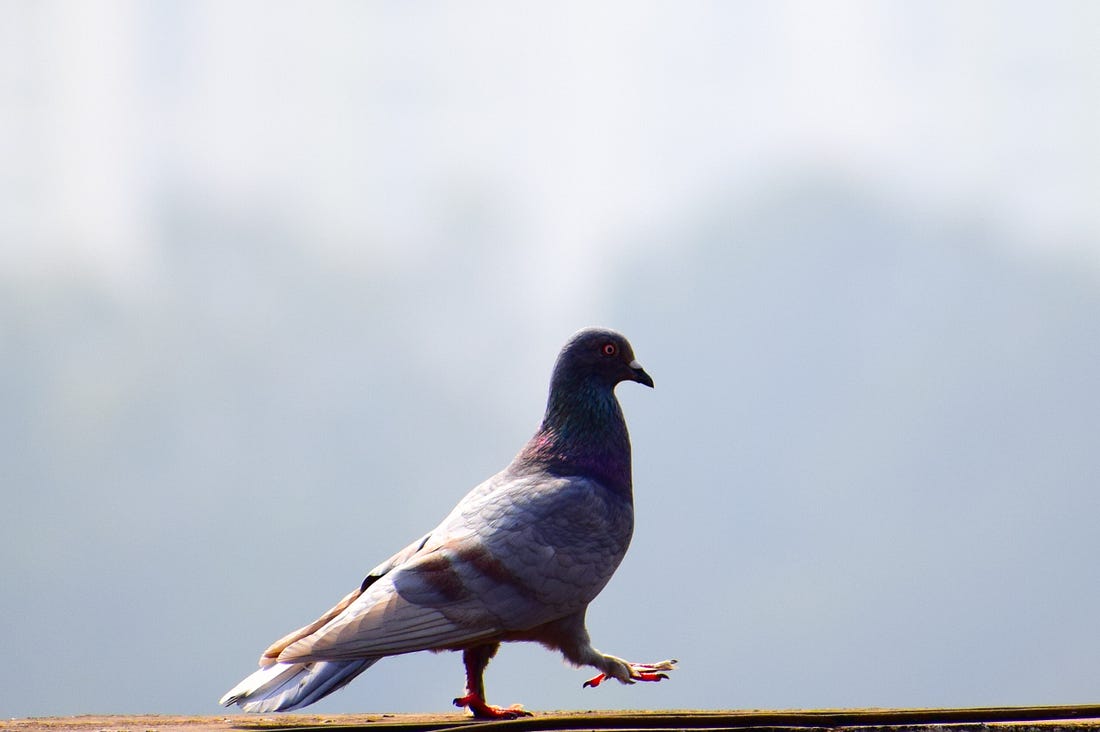Learned
DIY x EDU, FYI
Hi!
Welcome to the inaugural edition of this newsletter, Learned, a resource for all of us who are trying to get just a little more educated. We’ve got links, we’ve got commentary, we’ve got a couple of funny pictures. Let’s get to it.

What We’re Learning:
This week, I’m (still) learning Japanese. Ever thought about trying Japanese? While it’s not easy, the number of online and self-learning resources is exploding right now. I’ve been using WaniKani and BunPro for the past few months and have seen a lot of progress in my studies.
Both sites are built on SRS systems. Wikipedia:
a learning technique that incorporates increasing intervals of time between subsequent review of previously learned material in order to exploit the psychological spacing effect
WaniKani aims to take some of the sting out of learning kanji by making their site bold with lots of bright colors and just a smidgeon of gamification. The name itself means “alligator-crab” and they have a suitably weird mascot to go with it. While the number of kanji you learn stays constant from level to level, the difficulty increases. In theory, by the time you reach level 30 (where I am) you should be reading newspapers. In practice, who wants to read the newspaper?
BunPro does the same thing but with Japanese grammar. It’s name comes from the Japanese word for grammar, “bunpo,” and the English “pro.” The trouble is, unlike kanji which are single characters with specific, translatable meanings, many grammar structures do not align perfectly with English meaning the site still has some work to do before it is truly professional grade. To combat this, BunPro is creating a system wherein multiple answers can be given for various grammar problems, making it a very robust resource for grammar comparison and study.
WaniKani charges $9/mo or $89/yr. BunPro will begin charging in April of 2018 at $5/mo or $50/yr.
Other Resources:
There are dozens of different courses and methods of language study on the web these days. A few of the others that I’ve played with are below, but remember: there is no right way of learning a language, there’s only the way that works best for you.
How About You? What are you learning this week? Let me know.
What We're Reading:
Lesser Beasts: A Snout-to-Tail History of the Humble Pig
by Mark Essig
Food has been elevated by the advent of reality t.v. to something between glamour and art, but we, as a species, still need to do some more thinking about where our food comes from. Lesser Beasts traces the history of the pig at it intertwines with human history, from the ancient wild pigs that lived in the streets of our earliest cities to modern pig farms where pigs are bred and slaughtered by the thousands for our tables.
It's a fascinating look at an animal we often take for granted. I never had a pig. My farming and 4-H days ended before I reached that more advanced level of husbandry. But several of my friends did. To my 10 year old eyes, these pigs were big, ugly, mean creatures and I was only too happy for my friends when the swine they had raised fetched good prices at auction.
Here in Japan, pigs are among the most "kawaii*" of critters. The cute, round snouts of baby pigs fill photo books and peer out from calendars. But, as in the U.S., there is the disconnect as the piggies change from "kawaii" to "oishii."
So far, 40% of the way through the book, Japan's relationship to pigs has not been mentioned. I suspect that as we enter the modern age (post World War II) we'll see how the pigs' influence spread throughout Asia along with that of the United States. All in all, it's a hell of a book and food for thought.**
Down the Rabbit Hole:
We’ve been talking about rhythms of language in my classes this week, which reminded me of the master, George Carlin talking about advertising. Which in turn reminded me of this clip of Daniel Radcliffe rapping Blackalicious’ “Alphabet Aerobics.”
Rap really is the modern embodiment of rhythm, but I remember being 12 years old and getting my hands on Big Audio Dynamite II’s “The Globe.”
The only important thing these days is rhythm and melody. Rhythm… and melody…
B.A.D. II was Mick Jones of the Clash who, as the only band that matters, should need no introduction. But, just as a reminder, they were one of the pioneers of the punk movement, turning noise into political thought and stealing liberally from the uprisings and rebellions that had gone before.
As the years went by, other members of the Clash also founded new bands. Like Joe Strummer who formed the Mescaleros, and whose song “Johnny Appleseed” was featured as the theme song for HBO’s John From Cincinnati, a problematic show which is nonetheless emblematic of the “credits better than the show.”
For the record, my favorite opening sequences:
Now that Netflix is trying to get beyond title sequences altogether, it might be a good time to re-watch this playlist.
Random Fact:
Apparently, doves and pigeons are the same bird. Which is why Japanese has only a single word for both animals: 鳩.

That’s it. Stay strong, stay healthy, learn something.

